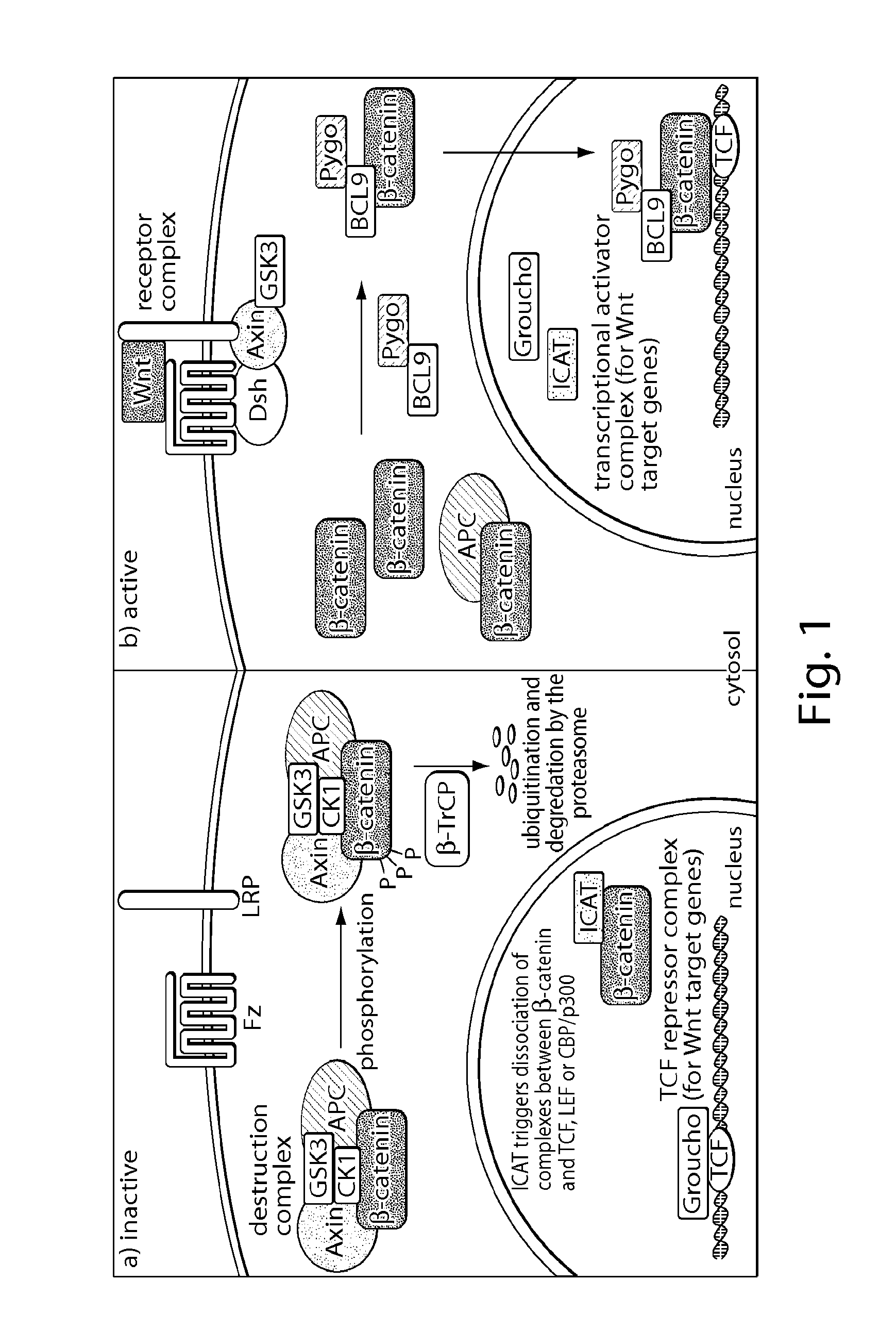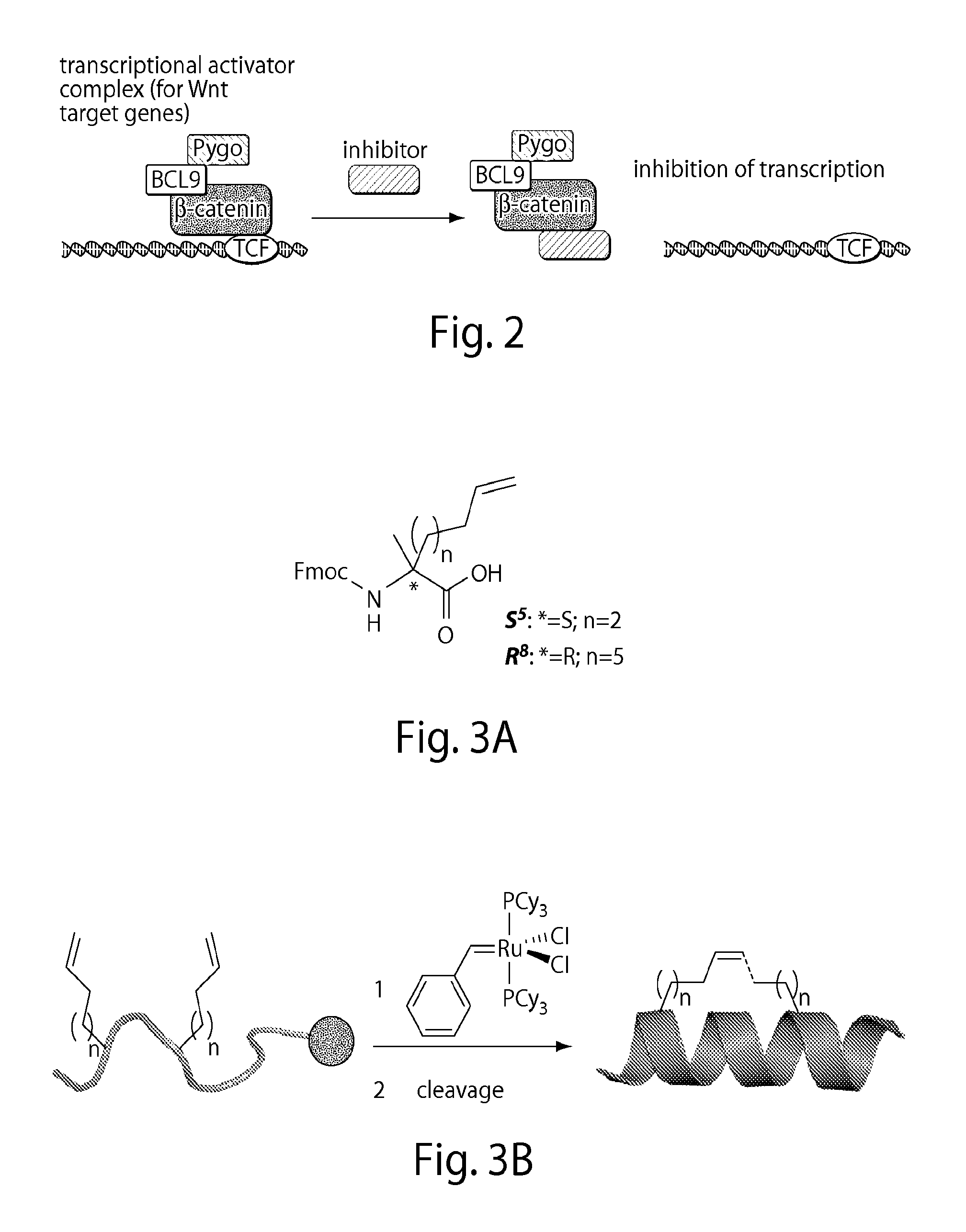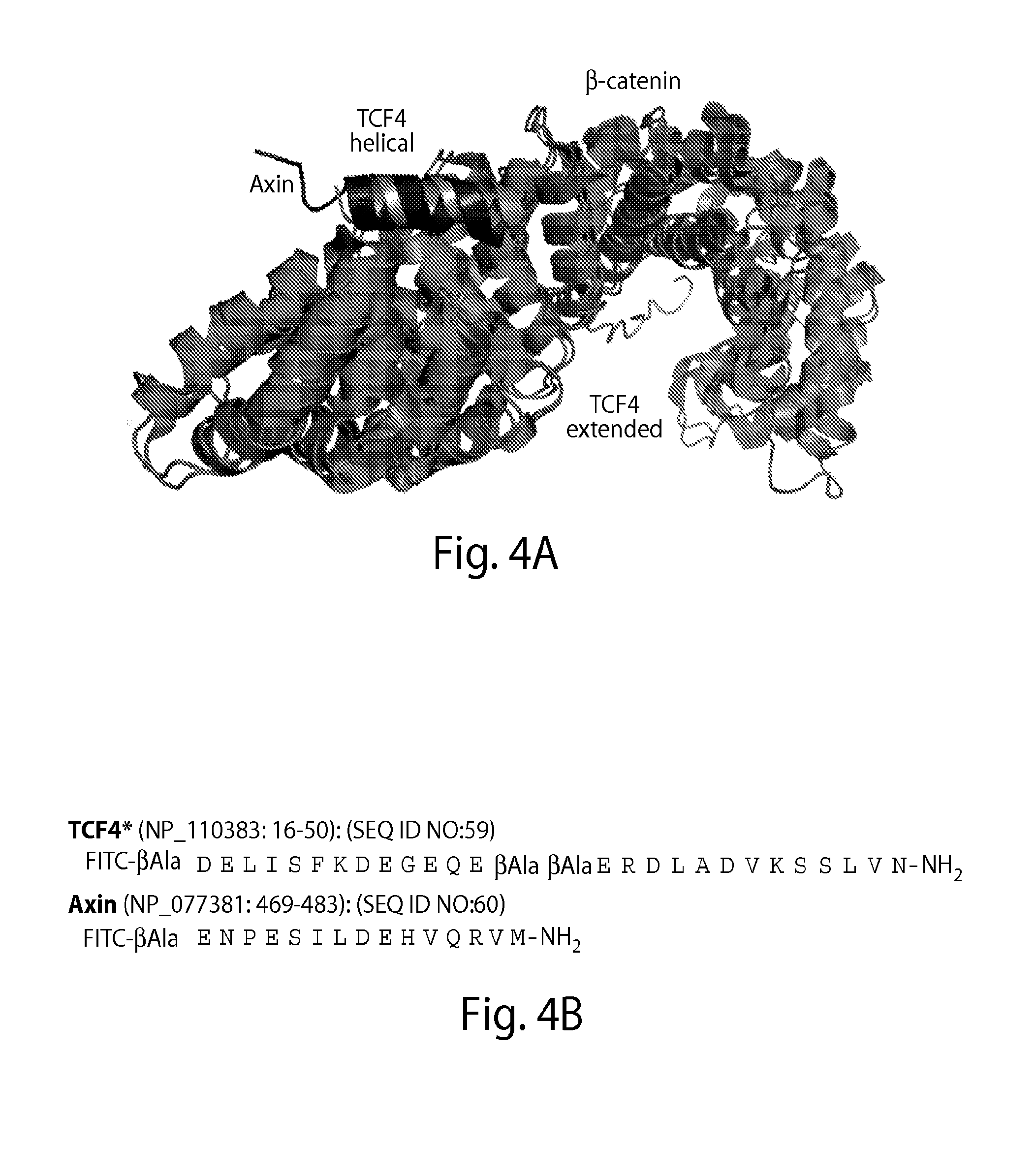Beta-catenin targeting peptides and uses thereof
a technology of beta-catenin and peptides, which is applied in the direction of peptide/protein ingredients, peptide sources, drug compositions, etc., can solve the problems of lack of binding affinity and/or specificity, poor cell permeability, etc., and achieve the effect of increasing the helical character of peptides
- Summary
- Abstract
- Description
- Claims
- Application Information
AI Technical Summary
Benefits of technology
Problems solved by technology
Method used
Image
Examples
examples
[0411]Deregulation of Wnt / β-catenin signaling is associated with several types of cancer. Especially, a reduced ability to degrade β-catenin, e.g., by the inactivation of the destruction complex or by loss of β-catenin phosphorylation sites, can be involved in the formation of cancer.[2, 3] Restoring this ability would contribute to target cancers that depend on deregulated Wnt signaling to grow. The manipulation of requisite protein-protein interactions offers a strategy to interfere with this pathway, e.g., targeting the signaling cascade downstream by inhibiting the interaction of β-catenin with TCF transcription factors (FIG. 2). This setup may allow for inhibition of Wnt signaling independent of the site of deregulation within the pathway.
[0412]Due to large interaction areas, the precise manipulation of protein-protein interactions is complicated.[6] In principle, an isolated bioactive helix of a protein could be used to interfere with such interactions. However, small peptides...
PUM
| Property | Measurement | Unit |
|---|---|---|
| pH | aaaaa | aaaaa |
| dihedral angles | aaaaa | aaaaa |
| dihedral angles | aaaaa | aaaaa |
Abstract
Description
Claims
Application Information
 Login to View More
Login to View More - R&D
- Intellectual Property
- Life Sciences
- Materials
- Tech Scout
- Unparalleled Data Quality
- Higher Quality Content
- 60% Fewer Hallucinations
Browse by: Latest US Patents, China's latest patents, Technical Efficacy Thesaurus, Application Domain, Technology Topic, Popular Technical Reports.
© 2025 PatSnap. All rights reserved.Legal|Privacy policy|Modern Slavery Act Transparency Statement|Sitemap|About US| Contact US: help@patsnap.com



